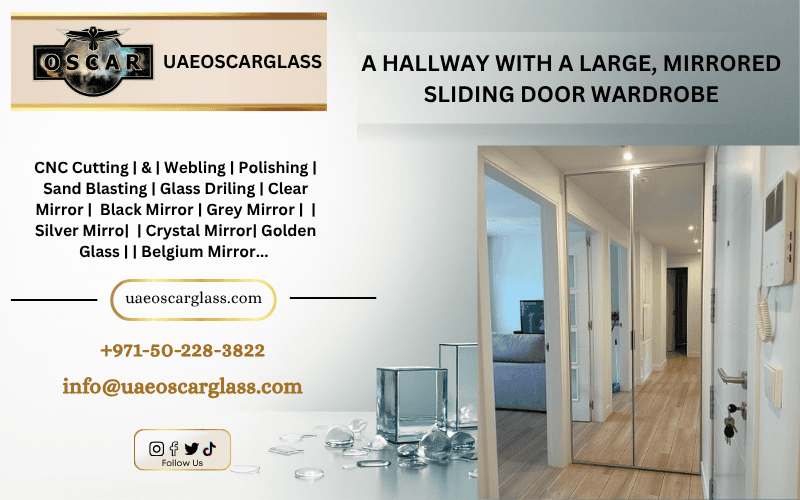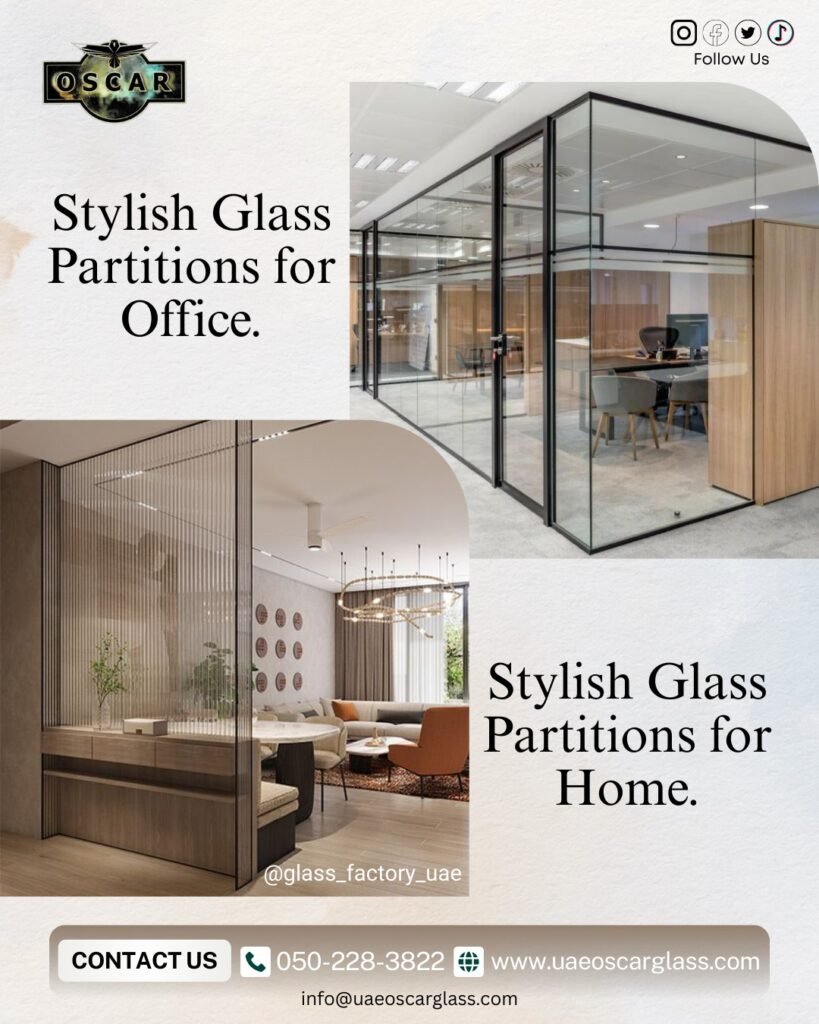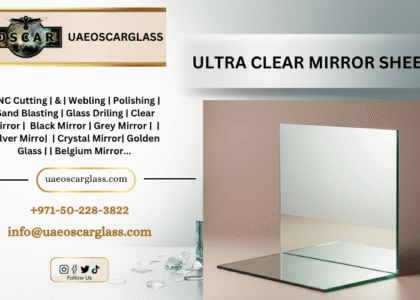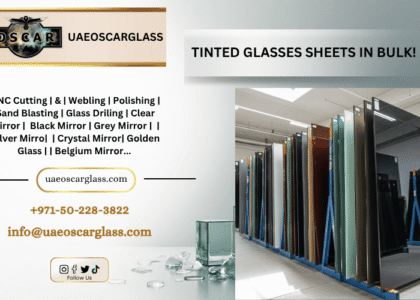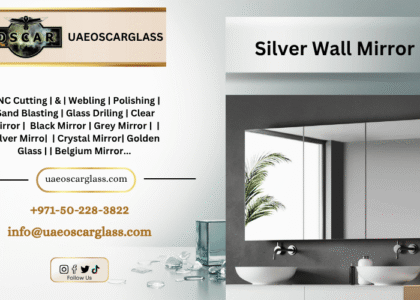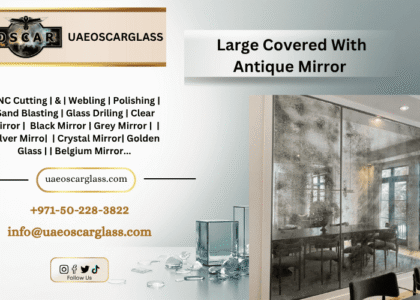One Way Mirror In the modern architectural and interior design world, the demand for privacy and elegance has increased more than ever. Among the many innovative glass solutions available, one-way mirrors stand out for their unique ability to provide visibility from one side while reflecting light on the other. These mirrors are not only used in buildings and offices but also play an important role in security, surveillance, and smart interior designs.
Let’s explore in detail what a one-way mirror is, how it works, its manufacturing process, advantages, applications, and why it’s becoming increasingly popular in homes, offices, and commercial projects.
What Is a One-Way Mirror?
A one-way mirror, also known as a two-way mirror or one-way glass, is a special type of glass that functions as both a mirror and a transparent window. It appears as a mirror on one side while remaining see-through from the opposite side. This effect is achieved through a thin, semi-transparent metallic coating on one surface of the glass.
The concept is simple yet fascinating — when one side of the glass is brightly lit and the other side is darker, the brighter side reflects light like a mirror, and the darker side allows visibility through the glass. This property makes one-way mirrors ideal for spaces that require observation without being seen, such as security rooms, interrogation areas, and even modern residential interiors.
How a One-Way Mirror Works
The functionality of a one-way mirror relies on the principle of light reflection and transmission. A thin metallic coating (usually Aluminium, silver, or chromium) is applied to the glass surface. This coating reflects part of the light and allows the rest to pass through.
Here’s how the magic happens:
- The brightly lit side acts as a mirror because the light intensity is higher.
- The darker side allows people to see through the glass, as less light reflects on that side.
The key to maintaining the one-way mirror effect is controlling light levels — it only works effectively when one side is brighter than the other.
Manufacturing Process
The process of creating a one-way mirror involves precise techniques to achieve the perfect reflective balance. The glass is typically produced using one of the following methods:
- Vacuum Deposition:
A very thin layer of reflective metal, such as aluminium or chromium, is deposited onto the glass surface in a vacuum chamber. This ensures even coating and high-quality reflectivity. - Sputter Coating:
In this advanced technique, atoms of metal are “sputtered” onto the glass using magnetic fields, creating an ultra-thin, durable coating that offers consistent optical performance. - Lamination:
Sometimes, one-way mirror films are laminated between two glass layers for enhanced safety and strength, making them suitable for architectural use.
The final product is carefully inspected for clarity, reflection quality, and durability before being cut and processed for installation.
Advantages of One-Way Mirror Glass
One-way mirrors offer a range of benefits that make them suitable for both functional and aesthetic applications.
1. Privacy and Security
The primary advantage of one-way mirror glass is its ability to provide privacy. It allows observation from one side without revealing what’s on the other. This makes it perfect for surveillance rooms, interrogation areas, cash counters, and executive offices.
2. Aesthetic Appeal
Modern architects and designers use one-way mirrors to create sleek, minimalist interiors. They add a futuristic and luxurious touch to any space while maintaining openness and visibility.
3. Energy Efficiency
The metallic coating on one-way mirrors helps reflect sunlight, reducing heat gain inside buildings. This contributes to lower cooling costs and improved energy efficiency — especially valuable in hot climates like the UAE.
4. UV and Glare Reduction
One-way mirrors block a large portion of ultraviolet (UV) rays and minimise glare, protecting furniture and interior materials from fading and providing a more comfortable indoor environment.
5. Versatile Design Options
One Way Mirror Available in various thicknesses, tints, and finishes, one-way mirrors can be customised for doors, partitions, windows, and decorative features, making them ideal for both commercial and residential projects.
6. Enhanced Safety
One-way mirrors can be manufactured as tempered or laminated glass, making them highly durable and safe. Even if broken, they do not shatter into sharp pieces, ensuring protection for users.
Applications of One-Way Mirror Glass
One-way mirror glass has a wide range of uses in multiple industries. Here are some of the most common applications:
1. Security and Surveillance
One Way Mirror Used in observation rooms, police interrogation rooms, and CCTV monitoring areas, one-way mirrors allow discreet observation without revealing the observer’s position.
2. Commercial Buildings
In offices, one-way mirrors are used in meeting rooms, reception areas, and executive cabins to ensure privacy while maintaining a modern, transparent design.
3. Residential Interiors
Homeowners use one-way mirrors for privacy windows, bathrooms, and stylish wall designs. It also serves as a functional decorative feature in modern villas and apartments.
4. Retail and Display Areas
One Way Mirror Retailers often use one-way mirror glass in display sections and fitting rooms. It enhances the shopping experience while maintaining security and control.
5. Smart Technology and Hidden Screens
One-way mirror glass is used in smart mirrors and hidden televisions. When the screen is off, it looks like a mirror; when turned on, the display becomes visible. This innovative use is growing rapidly in luxury hotels, homes, and showrooms.
6. Medical and Research Facilities
Hospitals and laboratories use one-way mirror glass in observation rooms to allow doctors or researchers to monitor patients or experiments without direct interference.
One-Way Mirror Glass in the UAE
One Way Mirror In the UAE, where modern architecture blends luxury with technology, one-way mirrors have become a preferred choice for architects and interior designers. Leading glass and aluminium companies in Dubai, Sharjah, and Ajman offer customized one-way mirror solutions for villas, offices, and commercial buildings.
These One Way Mirror not only support the energy efficiency goals outlined in UAE’s green building initiatives but also enhance privacy and aesthetics — essential for modern desert environments where sunlight and heat are abundant.
Many companies in the UAE provide high-performance one-way glass that meets ASTM and EN standards, ensuring durability, safety, and long-lasting visual quality.
Maintenance and Cleaning Tips
Maintaining a one-way mirror is simple, but it should be done carefully to preserve its reflective coating.
- Use a soft microfiber cloth and mild detergent for cleaning.
- Avoid abrasive cleaners or rough sponges that may scratch the surface.
- Clean in circular motions to maintain the mirror’s shine.
- For outdoor installations, periodic cleaning helps retain reflectivity and visibility.
With proper care, one-way mirrors can last for decades without losing their clarity or reflective power.
Conclusion
The one-way mirror is a brilliant combination of science, functionality, and design. It offers privacy without sacrificing visibility, enhances security while maintaining aesthetics, and supports energy efficiency through its reflective properties. Whether installed in corporate offices, retail stores, luxury villas, or surveillance rooms, one-way mirrors bring sophistication and practicality to any setting..

